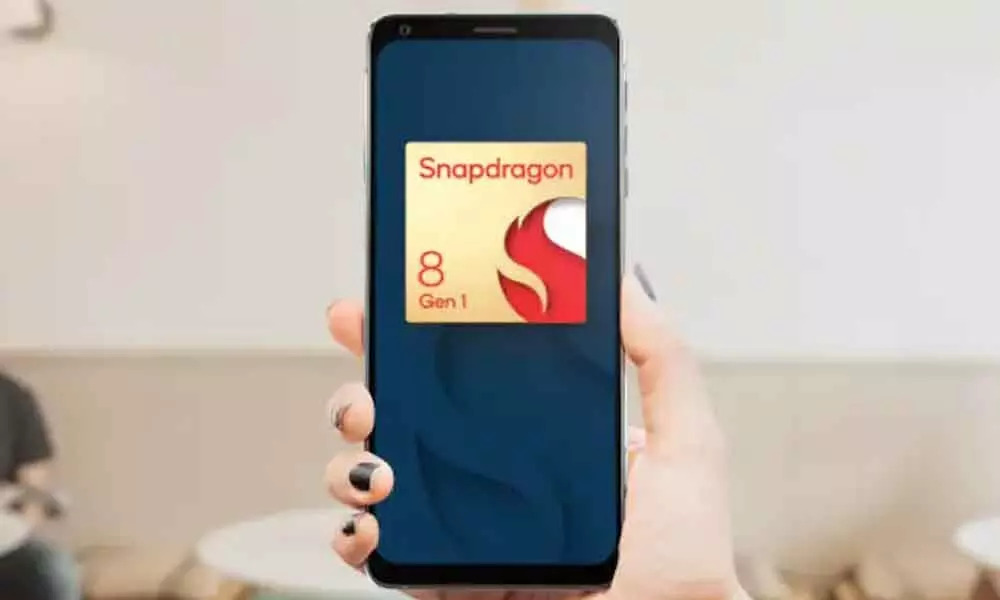Qualcomm’s Snapdragon 8 Gen 1 will power the next generation of Android flagships
3 min read
Qualcomm's Snapdragon 8 Gen 1 will power the next generation of Android flagships
Every December over the past few years, Qualcomm has held an annual event in Hawaii to announce its newest flagship cellphone chipset. This year is no different from the company taking the opportunity to uncover Snapdragon 8 Gen 1. It is true, for the second year in a row, Qualcomm moves away from sequential numbering schemes that have set processors for years. Just like Snapdragon 865 gave a way to 888, the company will now replace 888 with Gen 1.
The on-a-chip system includes the X65 5G Qualcomm modem itself. The company said it was able to increase the theoretical download speed of 10Gbps. That is one of the impressive specifications on paper, but it won’t mean too much in the real world because some of the fastest 5G networks cannot provide speeds of more than 4Gbps in ideal conditions. If you have access to WiFi 6 or 6E routers, Gen 1 can maintain 3.6 Gbps download speed via WiFi.
Like the superior chipset of the past, Qualcomm has tried hard to improve the camera experience. Gen 1 Displays a 18-bit image signal processor. That’s the first for the company, and something he said allows components to process 4,000 times more than 14-bit spectra ISPs found in Snapdragon 888. In addition, cellphones with Gen 1 will have the ability to take photos at 3.2 Gigapixels per second. In practice, it means genes 1 can process data from three 36 megapixel cameras simultaneously without lag shutter, according to Qualcomm.
In the other first for cellular devices, the company said the chipset can record 8K HDR recordings at 30 frames per second. Again, it was not the most practical feature for the telephone in 2021 because 4K was the top end for most of the content. On the note, Gen 1 supports UHD capture at 120 frames per second and can record slow motion recording at 960 frames per second at 720p. Separate from the spectrum ISP, Gen 1 includes the image signal processor which is always on which can power the camera while consuming very little battery power. This is a feature that will allow Gen 1 devices equipped to offer face detection always on biometric authentication.
General 1 will not offer a very enhanced CPU performance for what might be possible with Snapdragon 888 Plus. What is promised is a faster performance in AI related tasks. It was thanks to the Seventh Generation Qualcomm machine, which was said to be four times faster than its predecessor thanks to more memory and a faster tensor accelerator. Gaming Performance is another spotlight of Gen 1. According to Qualcomm, the newest Adreno GPU offers a 30 percent faster rendering performance while consuming 25 percent less power. More than ahead of audio, Gen 1 includes support for Qualcomm recently announced a lossless bluetooth codec. This can provide a 44.1KHz 16-bit audio that is quality for wireless connections.
Completing the Gen 1 feature list is a special trust management machine. The Gen 1 is the first cellular chipset that supports the standard of Google’s Android ready outside the box, which means it has the ability to store things like digital car keys and IDs.
With a combination of performance improvements and new features, Snapdragon 8 Gen 1 offers an attractive display on the next generation of Flagships Android. Now we have to wait to see what capabilities capabilities decide to activate their latest device. The first-equipped Gen 1 cellphone will arrive at the end of this year, more expected to come in the first half of 2022.
Separately, Qualcomm announced it partnered with Google to bring the company’s neural architecture search platform to its product portfolio. Technology, which will be available first on Snapdragon 8 Gen 1, allows the company to create and optimize the AI model automatically instead of manually. According to Google, NAS optimizes the AI model in a few weeks than the moon.








